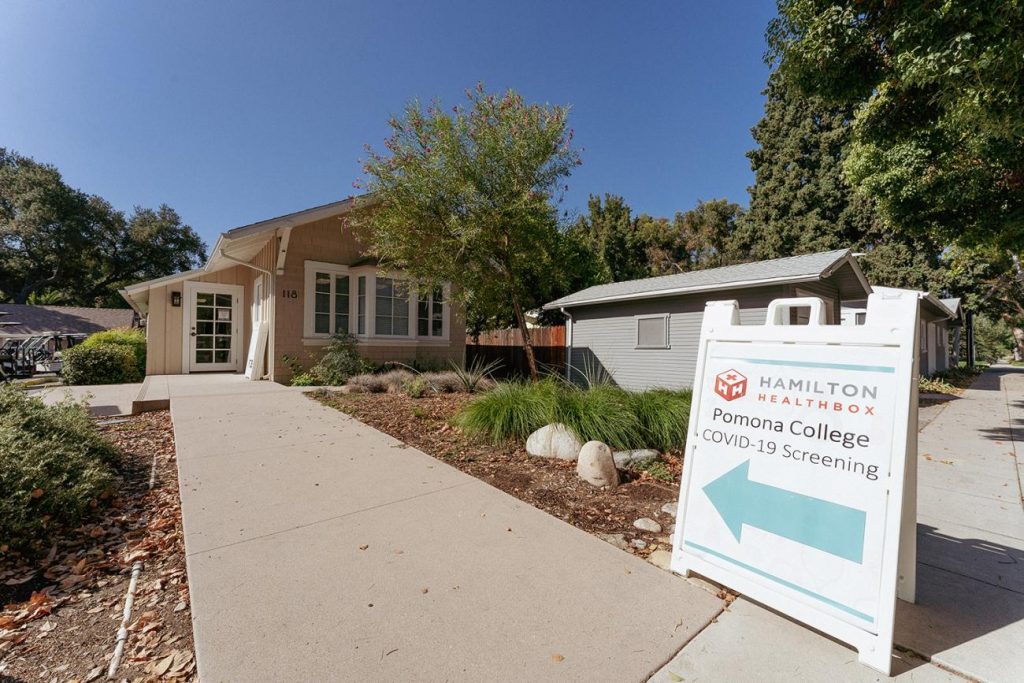Lauren Marler ’24 and Alyssa Wend ’24
Staff Writer and Copy Editor
On April 6, Scripps students received an email from Interim Vice President of Student Affairs and Dean of Students Adriana di Bartolo-Beckman informing them of new COVID-19 protocols amidst a recent spike in COVID-19 cases across the 5Cs.
Throughout the spring semester, Scripps has consistently required surgical masks or higher to be used indoors, while CMC lifted its mask mandate on March 28. Many students support Scripps’ continued mask mandate, as they believe that wearing a mask respects students’ varying levels of comfortability, especially immunocompromised students. “It’s a considerate thing to do,” said Zoey Lofgren ’24.
However, as the masking policies across the consortium became more inconsistent and schools remained opaque about communicating policy details, students grew confused. “At first I felt like, ‘Why is everyone else getting rid of theirs but we aren’t?’ and then as the semester has gone on I’ve started to feel better about keeping it,” said Ingrid Bergill ’23.
Pre-spike, students expressed their frustration with the changing policies across the 5Cs and the general lack of inter-school coherence. “Sometimes I find it weird that there is lack of consistency across the 5Cs because they brand themselves as five colleges that act as one sometimes,” Avalon Brice ’24 said. “As a student, I think it would make sense for us all to follow the same rules and regulations, but administrations know what their students need.”
Furthermore, the lack of communication between the colleges was a large issue for students this semester. “The first time I heard about mask policies at other schools changing was someone very off-handedly mentioning that CMC was dropping theirs, and then on social media,” said Bergill. “It was stressful for me to not hear about it directly and just hear rumors and really feel unsure about what was actually going on.”
This seemed to create a space where students went to other campuses not knowing or abiding by the different mask mandates. “It seems to make other students feel like the rules apply to them based on their college, not based on what campus they’re actually on,” said Bergill. “It’s creating a hostile environment in that students are policing it when we shouldn’t have to be.”
Tension around the varying policies heightened alongside Claremont’s COVID case count. On April 5, 30 Scripps students tested positive, and an additional 25 students tested positive on April 6. According to the COVID-19 dashboards at the five undergraduate colleges, 428 5C students tested positive from the week of April 4 to April 10. With these new cases, Scripps and the other 5Cs are implementing changes to stop the spread.
These changes include pausing cross-campus dining, bringing food trucks to campus, and requiring students to eat outdoors. Additionally, 5C events are being canceled as indoor social gatherings and club meetings are prohibited. However, OSE-approved gatherings outside can occur as long as they host fewer than 10 people. To stop the spread in the classroom and make accommodations for students in isolation housing, some professors have also chosen to move their classes onto Zoom.
Prior to the spike in cases, cross-campus dining had recently reopened on Feb. 26. While most students were happy to be able to eat at other schools, inconsistencies in masking policies may have contributed to the increase in cases.
In particular, students pointed out that CMC’s removal of their mask mandate created discrepancies in the dining halls. “You’ll have people from CMC not wearing masks at our dining hall, and they probably have a higher COVID rate than we do,” Lofgren said.
In the email sent on April 6, Dean di Bartolo-Beckman wrote, “Our preliminary assessment suggests a number of factors are contributing to the rise in cases amongst students including the presence of the BA.2 variant, which is more transmissible (though generally not more severe in its effects than the earlier Omicron variant), outdoors social events in which masking is not required, and students return from Spring Break.”
This new change took some students by surprise. “I feel like nothing has been communicated to me,” said Brice. “All of a sudden yesterday everything kinda shut down all the sudden. I feel like I know so many people right now that have COVID and admin is not providing options for classes besides in person. It’s sad but canceling events and closing dining is a step to protect everyone.”
However, Lofgren was not surprised about the spike in cases and new restrictions. “I think that closing cross-campus dining is a good step, but the real thing that would help is if people actually were enforcing mask policies,” said Lofgren.
Ultimately, students feel that a new system that updates all students at the consortium of changes is needed. “It would be nice if when there are large policy shifts to just notify the other schools as well,” said Bergill. “Just to know that they want us to be aware.”
COVID Dashboards: student counts – 428 students tested positive last week
Scripps (4/8): 83
CMC (4/11): 156
Mudd (4/4 – 4/10): 34
Pitzer (4/11): 63
Pomona (week of 4/3): 92
Image Source: Pomona College



